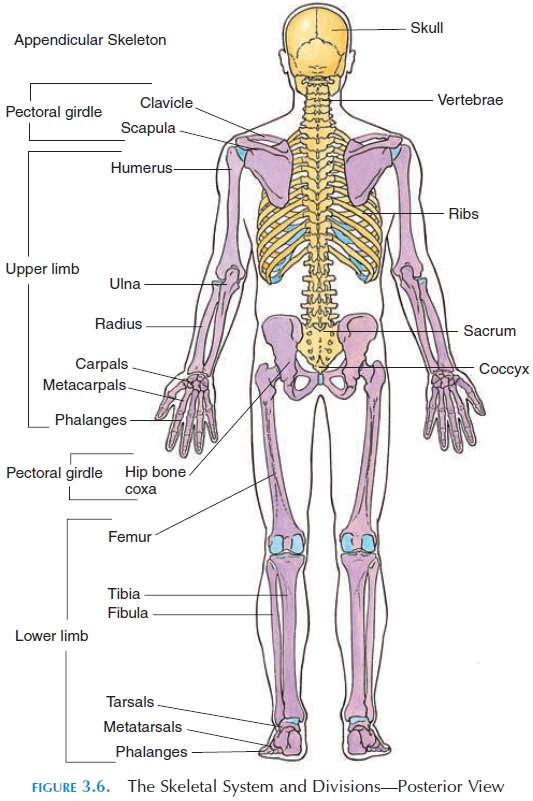Chapter: The Massage Connection ANATOMY AND PHYSIOLOGY : Skeletal System and Joints
Human Skeleton
The Human Skeleton
The human skeleton (see Figures 3.5 and 3.6) can be considered to have two main divisions—the axial and the appendicular skeleton. The axial portion is made of bones in the central or longitudinal axis; the skull, vertebrae, ribs, and sternum. Tiny bones (os-sicles) located in the middle ear and the hyoid bone, located in the neck, are also part of this division.

The appendicular skeleton is made up of bones that form the appendices—the limbs—and includes the bones that attach the limb to the axial skeleton: the bonesof the shoulder and pelvic girdle and the bones of the upper and lower limb.

The skeletal system consists of 206 bones, of which approximately 40% (80 bones) is part of the axial skeleton. The axial skeleton creates a framework that supports and protects delicate organs of the body and provides a large surface area for the attachment of muscles. Muscles that alter the position of the head, neck, and trunk; those that perform respiratory movements; and muscles that stabilize the position of the limbs when they move are all attached to the axial skeleton. The joints between the bones of the axial skeleton are strong and allow only limited movement.
Related Topics